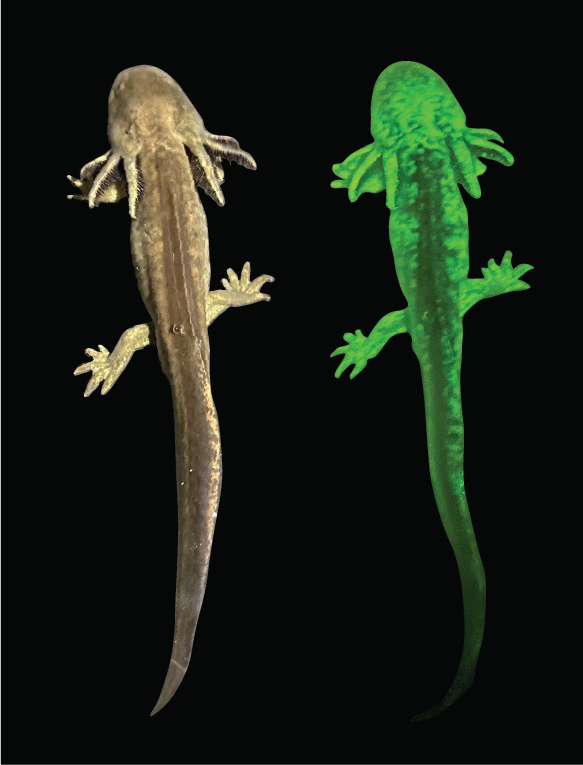Last updated: March 8, 2025
Article
Biofluorescence in Tiger Salamanders Documented in Rocky Mountain National Park for the First Time
We documented biofluorescence in tiger salamanders in Rocky Mountain National Park. It was a first for the park.
By Benjamin LaFrance, Andrew Ray, Amanda Kissel, and Erin Muths

Image © Benjamin LaFrance
Picture This
The stories behind extraordinary images and videos from the practice of park science
Amphibians and other infrequently observed animals often lack the notoriety and public recognition associated with larger, more visible wildlife. However, amphibians play a pivotal role in nature. Their sensitive skin and reliance on both water and land make them good indicators of ecosystem health. Unfortunately, amphibians are threatened by habitat destruction, climate change, pollution, and disease. National parks are important preserves for amphibians, who are among the most imperiled group of animals in the world.
Rocky Mountain National Park in Colorado is home to four species of amphibians. One of these is the western tiger salamander. These salamanders are also known as mole salamanders, because terrestrial adults spend most of their time underground. Sometimes, tiger salamanders can be found in the burrows of other animals like pocket gophers, ground squirrels, and even badgers! Some species of tiger salamander, like those in Rocky Mountain National Park, can reproduce in their juvenile (i.e., larval) form. This is called paedomorphosis. In contrast to their terrestrial counterparts, salamanders must remain underwater in their paedomorphic form.
Scientists have recently shown that many amphibians biofluoresce. Biofluorescence is the ability to absorb visible and ultraviolet light and re-emit it at a lower energy level (e.g., blue light re-emitted as green). We don’t know why amphibians biofluoresce, but we were excited by this phenomenon and wanted to see if the tiger salamanders of Rocky Mountain National Park biofluoresce!

Image credit: NPS / Andrew Ray
During the twilight hours of August 12, 2021, we observed paedomorphic (larval) western tiger salamanders at Lily Lake in Rocky Mountain National Park. We took the first photographs recorded in the park of their biofluorescence in response to blue light.
We chose to test whether salamanders biofluoresce under blue light, because it predominates in the underwater habitats of terrestrial and paedomorphic salamanders. This is especially true at twilight, when they are most active.
The conditions were technically challenging. We had to contend with low light and highly mobile, underwater salamanders to get the photographs.
We still do not know the role of biofluorescence in amphibians, but interest is growing. Biofluorescence may play a crucial but unknown role in salamander ecology. We hope that these studies will help to better understand and protect these creatures.
About the authors

Benjamin LaFrance is an amphibian monitoring project coordinator at the Northern Rockies Conservation Cooperative. He has helped coordinate amphibian monitoring projects in Grand Teton and Yellowstone national parks since 2020. Image courtesy of Benjamin LaFrance.

Andrew Ray is an ecologist with the National Park Service’s Greater Yellowstone Inventory and Monitoring Network. He has been the NPS lead on amphibian monitoring projects in Grand Teton and Yellowstone national parks since 2012. Image courtesy of Andrew Ray.

Amanda Kissel is an ecologist with Conservation Science Partners. She has been a researcher and collaborator on amphibian projects in Rocky Mountain National Park from 2018 to the present. Image courtesy of Amanda Kissel.

Erin Muths is a zoologist with the U.S. Geological Survey. She has been a researcher and collaborator on amphibian projects in Rocky Mountain National Park from 1995 to the present. Image courtesy of Erin Muths.
